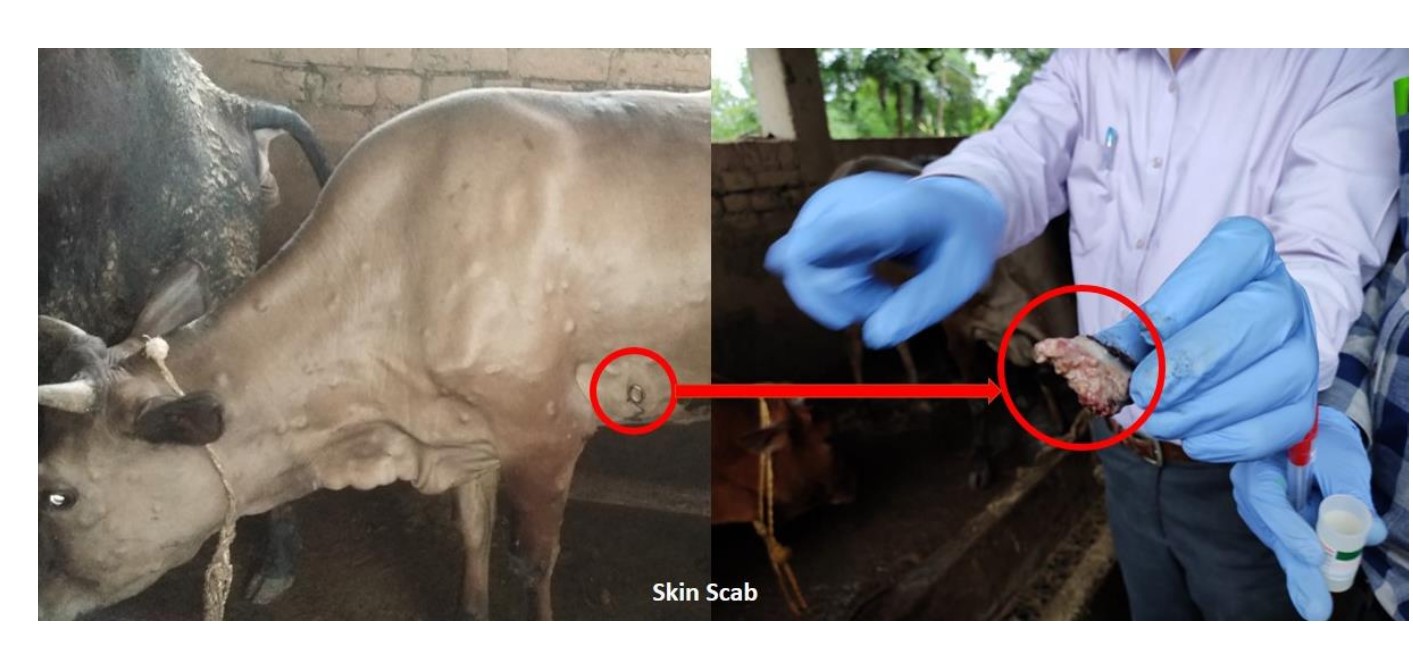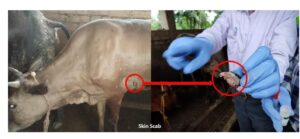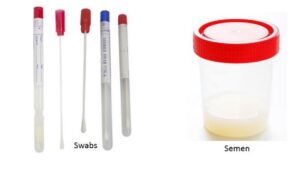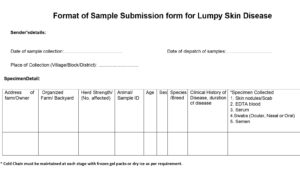Guidelines for Sample Collection and Dispatch for Diagnosis of Lumpy Skin Disease (LSD)
The following specimens should be collected from LSD suspected cattle or buffalo and sent to the laboratory for LSD testing.
- Whole Blood: Collect sufficient volume of blood (a minimum of 5 ml) from the jugular or tail vein (coccygeal vein) in sterile vaccutainers (10 ml) with EDTA (purple stoppers) and store at refrigerated temperature (40C) until shipping in ice within 2-3 days.
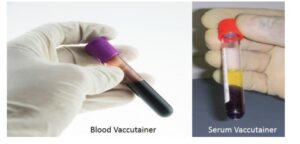
- Serum: Collect sufficient volume of blood (3/4 vol. of tube) from the jugular vein in sterile vaccutainers (10 ml) without anticoagulant (red stoppers). After collection, tubes should be allowed to stand at ambient temperature for at least 1-2 hours in an upright position to let the clot begin to contract. Store the serum vaccutainers at refrigerated temperature (40C) until shipping in ice within 2-3 days. If shipping period is >48 hrs., ship in dry ice.
⋅Skin nodular lesions or scabs: Restrain the animal and use suitable local anaesthetic to avoid injury to both animal and sample collector. Collect skin biopsy from skin nodules or scabs (2-4 numbers) preferably from upper body parts of each animal and place them in sterile leak-proof containers having 4-5 ml of viral transport medium or sterile phosphate buffer saline with antibiotics (Streptopenicillin). Store the samples at refrigerated temperature (4 0C) until shipping in ice. If shipping period is >48 hrs., ship in dry ice.
- Swabs (Ocular, Nasal or Oral): Collect samples using sterile swabs and place into leak-proof sterile tubes having 1ml of viral transport medium or sterile phosphate buffer saline with antibiotics (Streptopenicillin) and store at refrigerated temperature (40C) until shipping in ice. If shipping period is >48 hrs., ship in dry ice.
- Semen: In case of affected bulls used for breeding, besides blood, skin lesions/scabs and other samples, collect 2-3 ml of raw semen in sterile leak-proof containers and store at -80 oC or liquid nitrogen until shipping in dry ice or LN2. In case of frozen bovine semen, send at least 2-3 straws of semen in dry ice or LN2.
General Guidelines:
1. Avoid undue stress or injury to animals during sampling.
2. Collect appropriate samples based on the clinical signs. Skin lesions and scabs, nasal, oral and ocular swabs, EDTA blood and serum are preferred samples for laboratory testing.
3. All materials used for sampling skin tissue should either be autoclaved or be disposed off safely.
4. Sample aseptically, avoid cross-contamination between samples, disinfect the sample collection site, change needles, scalpels and gloves.
TRANSPORT OF SAMPLES
• Samples should be labelled properly before their dispatch to ICAR-NIHSAD, Bhopal as soon as possible to prevent them from deteriorating and to ensure a reliable result, as well as to prevent the samples and the environment from being contaminated during transport. Ensure that the samples reach NIHSAD within 2-4 days of collection or send the samples through special messenger.
• Shipped samples must be provided with adequate amounts of cooling materials, e.g. ice packs/dry ice, to prevent deterioration. It is important always to maintain a “triple layer” packing structure when transporting diagnostic samples.
• The primary (leak-proof, water resistant and sterile) container holds the sample. The lid of each sample container must be sealed with adhesive tape or parafilm and wrapped with absorbent material. Several sealed, wrapped primary containers may be placed in one secondary container. The secondary leak-proof container should contain a sufficient amount of absorbent material. Required labels must be affixed to the rigid outer (third) layer, with sufficient cushioning or dry ice inside.
Format of Sample Submission form for Lumpy Skin Disease



